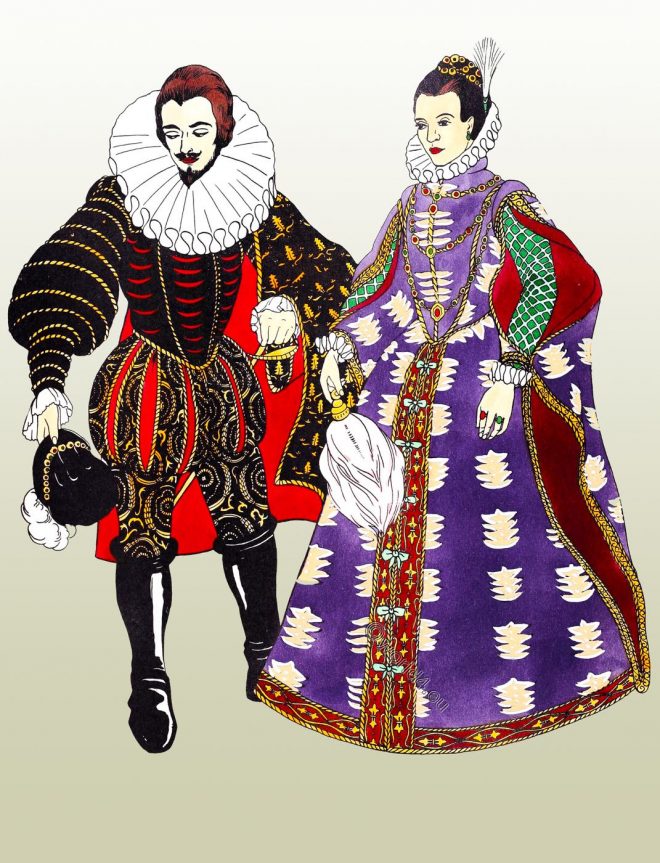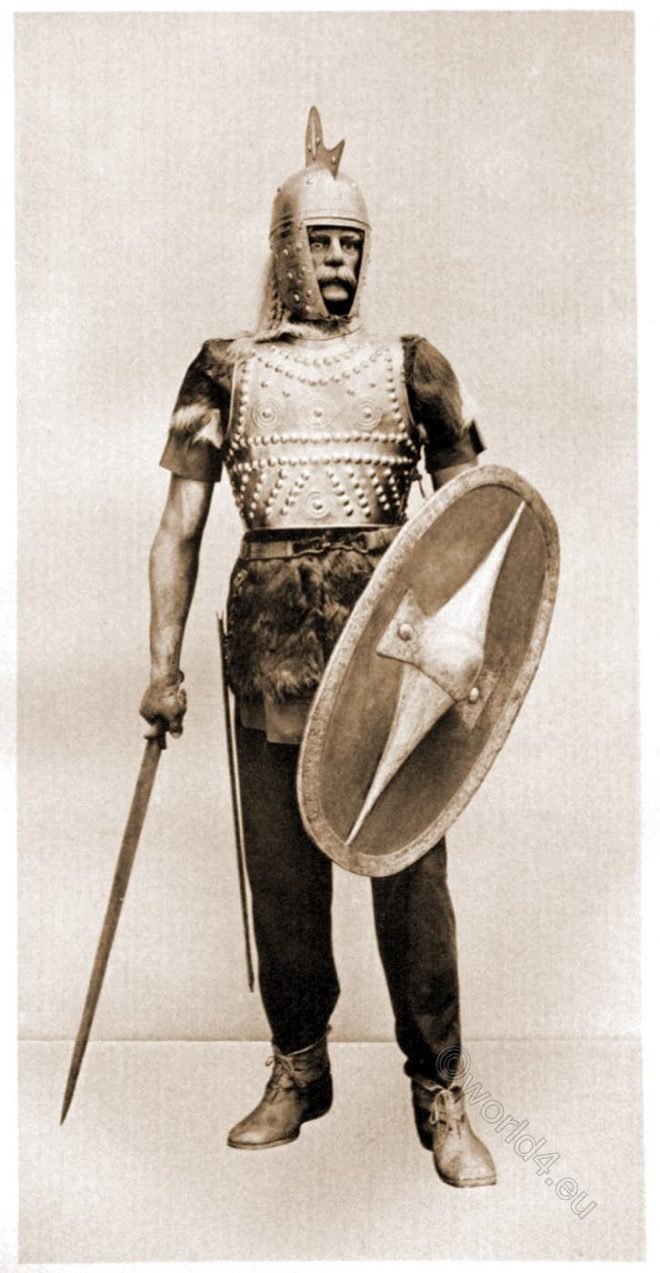The man and woman shown here are wearing typical ensembles of the Elizabethan era. The man is somewhat of a dandy. The woman is wearing a Spanish farthingale.
Category: Europe
Fashions in Europe. European Costume and Cultural History.
Kittim, Cyprus, View of Larnaca, 1836.
The island of Cyprus was known to the Hebrews under the name of Chetim (or Kittim), from Kittim the son of Javan, the son of Japhet, the son of Noah.
The Lictor panel. A stately Roman lictor in a rich costume.
The Paulus Emilius series, as previously stated, was woven in the third quarter of the XVII century. It showed the Roman hero clad in a sumptuous robe …
Burgamote Horns of the Corporations of Canterbury and Dover.
BEAUTIFUL horns of hammered and embossed bronze belonging to the Corporations of Canterbury and Dover.
Musical instruments. Wind and Stringed instruments of ancient Rome.
Rome. Musical instruments. Wind instruments. Stringed instruments. Cymbals, Timpani and castanets.
Tartan of Clan Brodie. Red and black check, popularly called Rob Roy.
Many of the oldest Scottish tartans in variations of red and black check are popularly called Rob Roy
Reconstructed Gallic warrior from about 400-200 B.C.
Gallic warrior from about 400-200 before Christ. Reconstructed after antique sculptures and original finds. Gimbel’s weapons collection.
Gauls. The inhabitants of Gaul before the Roman conquest.
Gauls. Male and female types. Gallic chief. Merovingian chief. Frankish warrior with the Scamasax. Farmers. Flag Bearer. Horsemen. Warrior types of the Salian Franks. The bardocucullus. The carnyx, war trumpet.
Feminine Elizabethan ensemble of the 16th c. England Tudor era.
The woman shown here might very well be the Queen herself.
The Royal Château de Blois, Loir-et-Cher.
The Palace of Blois affords an example of successive changes in the buildings, from the original castle to the period of the Renaissance.










